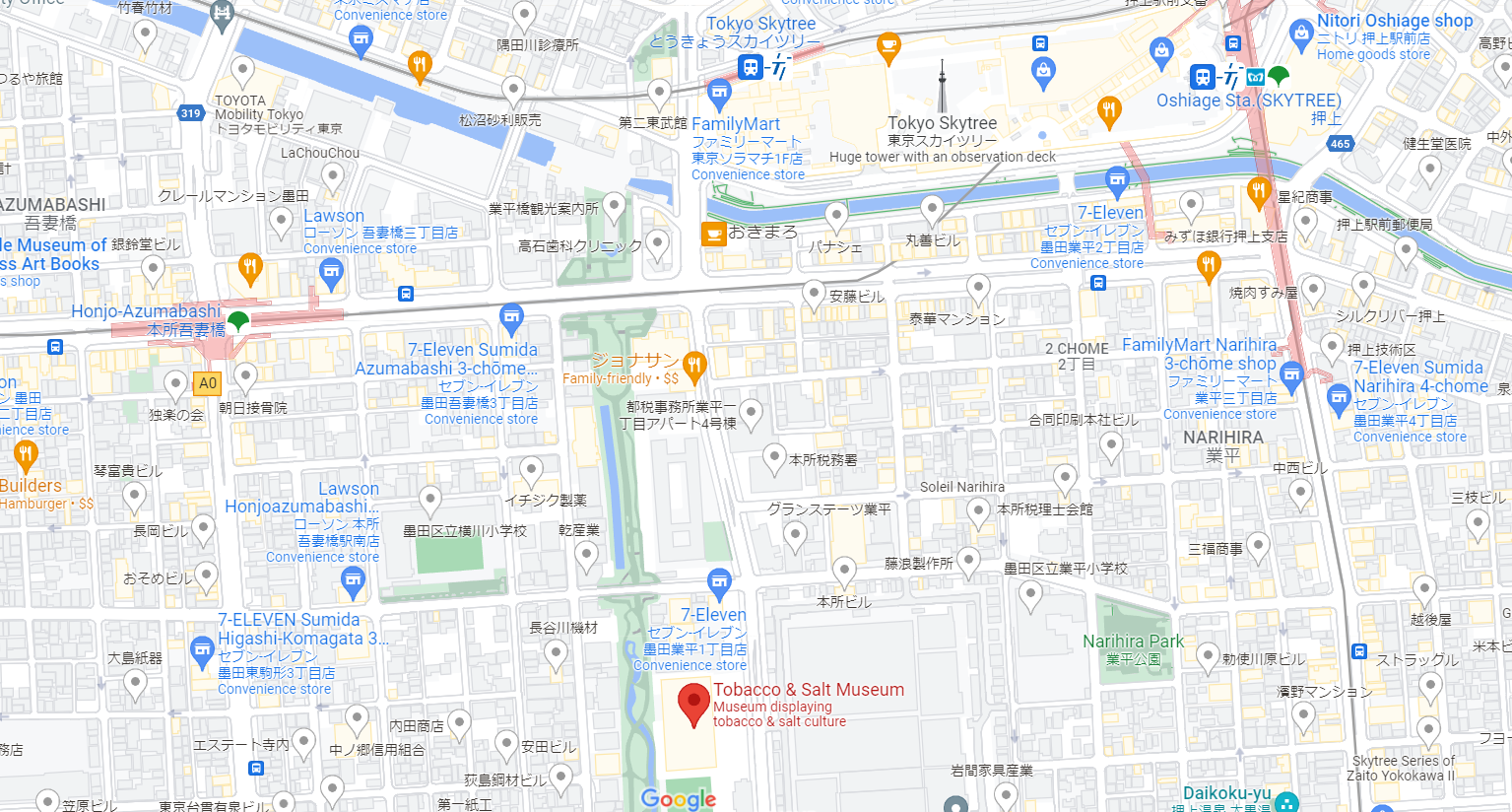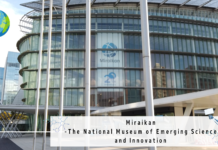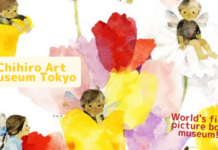Hi hi! Jess here!
So, I’m not a smoker. I’ve never smoked or chewed tobacco in my entire life. This isn’t a PSA; I just want to give some background for how I was feeling as we approached the Tobacco & Salt Museum in Sumida, Tokyo. To be completely honest, I had no idea what to expect! Were we going to be looking at a variety of kinds of tobacco? How much was there to dig into? Also, why salt?
Needless to say, I was pleasantly surprised at what the museum had to offer! The very first room we walked into hits you with impact and sets the stage for the rest of the facility — a recreation of an ancient Mayan temple welcomes guests and starts them on a journey of learning about the history of tobacco and its cultural impact. This is the part of the museum that really fascinates me; the cultural aspects of a product and how it intertwined (or continues to intertwine) with the daily lives of different people.
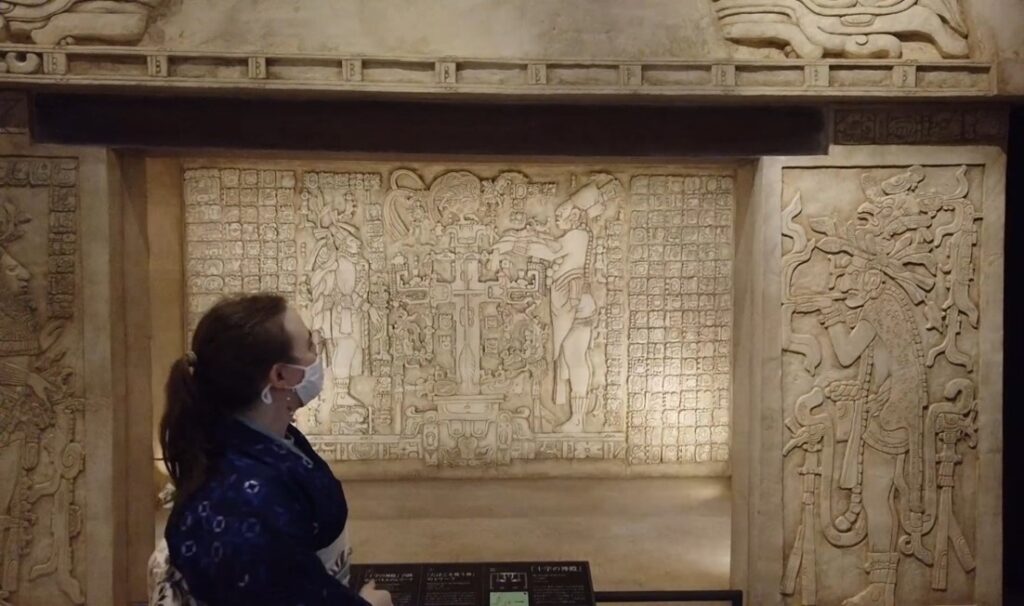 I definitely wasn’t expecting this!
I definitely wasn’t expecting this!
There’s so much to see at the Tobacco & Salt Museum! I probably could have spent a couple of hours just looking at the artisanry and artistic style of all the pipes and other paraphernalia related to the consumption of tobacco. It’s really interesting to me to see the reflection of different cultures around the world throughout time from an aspect I’m wholly unfamiliar with (again, I’ve never imbibed tobacco). Of particular interest to me were all the interesting shapes the pipes took, and how those reflected the aesthetics of each culture they came from.
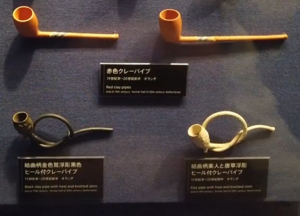
These twisted clay ones were a couple of my favorites!

Simple and clean design.
As we moved forward from tobacco plants to a map of trade routes to pipes to a life-size diorama of an old Japanese tobacco shop, I was impressed by the sheer number of tobacco-related objects, from a vast array of advertisements spanning hundreds of years, to depictions of tobacco in ukiyo-e woodblock prints and even antique matchboxes.

You can see the evolution of advertising firsthand through this timeline of tobacco-related ads and fliers on the wall.
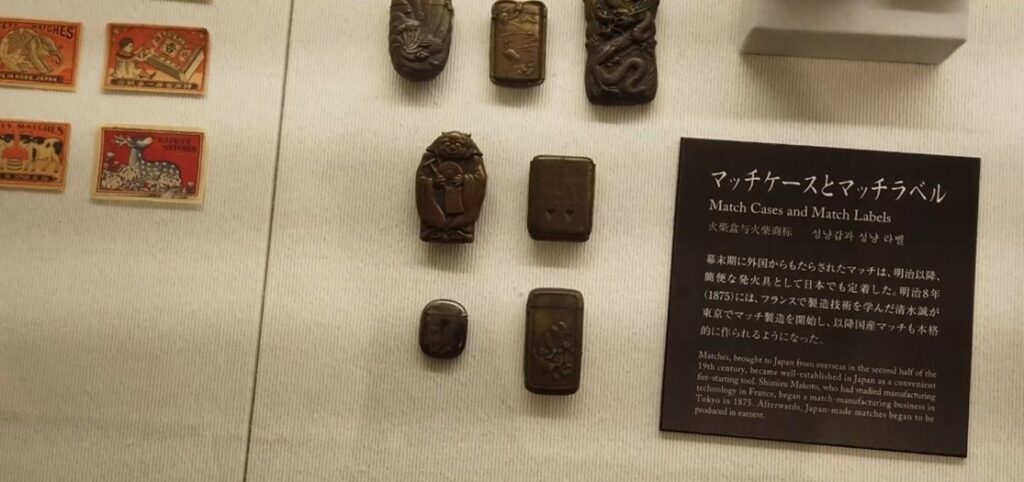
Look at that guy on the bottom left!! So tiny!!
The tobacco portion of the museum ends with an intriguing interactive display of tobacco chronology — hover your hand over an interesting object, and up pops the related information and more examples! We had a lot of fun checking out retro packaging this way. After a final peek into a true-to-life Showa-era tobacco stand, it was time to check out the salt exhibition.
Much like with the tobacco exhibition, I wasn’t quite sure what to expect from the salt section of the museum, but after seeing how interesting that was, I was now excited to see what the museum had to offer. And I was not disappointed! The museum introduces the importance of salt in the natural world through an eye-catching light display combined with video, which is activated as soon as you step foot into the space.

The entire salt exhibition was equally as fascinating as the tobacco exhibition, with displays based on its cultural influence as well as its extraction from natural resources, and even its inclusion in works of art!

The original statue of Saint Kinga of Poland was carved entirely out of salt.
The exhibition takes you through just how valuable salt has been to humans since the beginning of culture, exploring the various ways different groups of people have obtained salt, and even the biological reasons salt is so important to us and our diets. It also features, like the tobacco exhibition, a life-sized diorama of an old Japanese facility for extracting salt from seawater.
At first glance, a museum based on products like tobacco and salt might seem mundane, but I’m so glad we had the opportunity to visit and learn that this is not the case! There are so many fascinating aspects to culture and life that we can learn from seemingly simple parts of everyday life like tobacco or salt. The deeper we dive into these everyday objects we now take for granted, the more we learn just how far we’ve come in our development of technology, culture, and even art.
—————————————————————————–
The Tobacco and Salt Museum
1-16-3, Yokokawa, Sumida-ku TOKYO 130-0003
https://www.tabashio.jp/en/index.html
